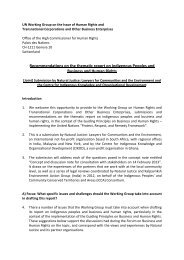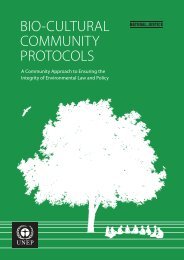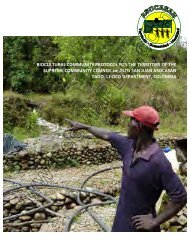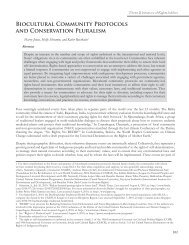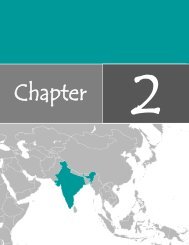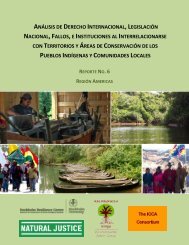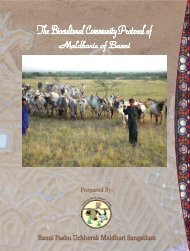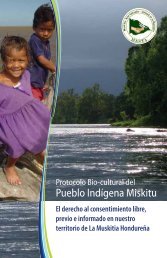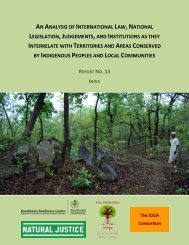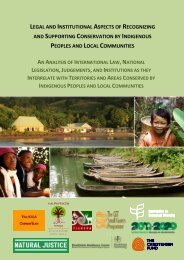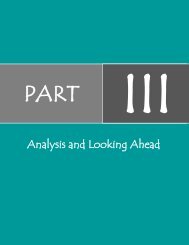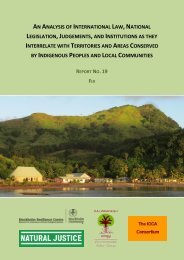Analyzing The Binding Nature of COP Decisions ... - Natural Justice
Analyzing The Binding Nature of COP Decisions ... - Natural Justice
Analyzing The Binding Nature of COP Decisions ... - Natural Justice
Create successful ePaper yourself
Turn your PDF publications into a flip-book with our unique Google optimized e-Paper software.
two-‐third majority vote <strong>of</strong> the parties to the instrument in question. Amendments only enter into force for those Parties that have agreed to be bound by it. 38Annexes and amendments thereto are adopted pursuant to the same process as amendments to the CBD or protocols with one important distinction. Unlike amendments to the CBD or protocols, where Parties opt-‐in in order to be bound by them, Parties must opt-‐out <strong>of</strong> annexes or amendments thereto by notifying the Depositary that they do not want to be so bound. Failure to do so will mean that the annex will enter into force with regard to that Party. <strong>The</strong> distinction between opting in and opting out is important because it puts the onus on the Parties to the CBD to take action if they do not want to be bound by an annex or amendment thereto. Whereas inaction in the context <strong>of</strong> adopting a protocol or an amendment to the CBD or a protocol will mean that the Party will not be bound by the protocol or amendment, inaction in the context <strong>of</strong> an annex or amendment thereto will mean that the Party will be bound. This distinction is also important because although the CBD states that “annexes shall be restricted to procedural, scientific, technical and administrative matters”, 39 “the lines between the ‘technical’ and the ‘substantive’ are <strong>of</strong>ten fluid.” 40 Thus, where annexes and amendments thereto contain substantive matters, Parties may end up being bound by an obligation not in the text <strong>of</strong> the treaty itself, despite the fact that they did not expressly consent to such an obligation. 414.2 CBD <strong>COP</strong> <strong>Decisions</strong> After each meeting <strong>of</strong> the <strong>COP</strong>, “decisions” are issued addressing a variety <strong>of</strong> different subjects, ranging from amending procedural rules to guidelines related to conducting social and environmental impact statements. <strong>The</strong> CBD is more or less silent in regard to the legal weight <strong>of</strong> <strong>COP</strong> decisions. 42 Presumably the issuance <strong>of</strong> <strong>COP</strong> decisions falls 38 Only two protocols to the CBD have been adopted since the CBD entered into force. <strong>The</strong>se are the Cartagena Protocol on Biosafety to the Convention on Biological Diversity and the Protocol On Access To Genetic Resources And <strong>The</strong> Fair And Equitable Sharing Of Benefits Arising From <strong>The</strong>ir Utilization To <strong>The</strong> Convention On Biological Diversity. Harrop and Pritchard, at 476. 39 CBD Article 30(1). 40 Brunee, at 20. 41 See Brunee, at 20 (noting that under the Montreal Protocol, “additions to an annex can significantly increase the scope <strong>of</strong> the obligations contained in the protocol text itself”). 42 CBD Article 12 refers to “decisions <strong>of</strong> the Conference <strong>of</strong> the Parties taken in consequence <strong>of</strong> recommendations <strong>of</strong> the Subsidiary Body on Scientific, Technical and Technological Advice[.]”



